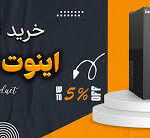Once you have your a course in miracles written, styled, edited, and proofed, it’s ready to ship off (as file attachments) to a printer who will create your final bound book version. Congratulations!
That usually takes weeks while the printer puts the book together, the cover is added, and you give it the final “blues” blessing. The bound gem finally arrives and it’s ready to ship and sell. (The ancillary publishers can do it in a week, but nothing is instant anywhere at the bound book level.)
What new publishers often don’t realize is that the moment that final text for the bound book is proofed and ready to send, they already have a salable book ready to sell-in digital form! It can be sold precisely as is-or it can be modified in an hour or several and sold three other digital ways.
Here are the four ways that digital books can be primed and sold. You decide your preference(s) and just direct the readers to your choice(s).
(1) Let’s call the first choice the digital download version. You can send it off just as it is, and send the front-back cover as a second attachment, perhaps with a greeting e-mail to those who buy it directly from you.
Or you can simply save the interior of the book, add the original front cover before the inside text, insert the back cover last, perhaps modify the ISBN number and bar code, and send this digital download version as an attachment. That presumes it was saved in.pdf or some locking software so the pages remain as they are in the original.
The usual problem is that when you add the cover before the interior copy, it will add another page to the text-and throw off the table of contents and index. The easiest way to offset that is to design the text on the first pages so you can easily create an open page at the digital level. For example, if you have a quote on about page three or four, that quote can be inserted on another page later in the book (or dropped), and the now earlier empty page will be replaced (in concept) by the cover. It will not affect the pagination that follows, other than the back cover will add another page at the end. Digitally, that won’t matter since the book can print any length. Two tweaks: eliminating that early page and perhaps repositioning that early copy, and the book is ready to sell! (Remember to save this altered version in.pdf so your changes are what they buyer receives.)
(2) The second let’s call the modified electronic copy version.
We haven’t addressed the selling mechanism in (1): how you are contacted and paid. Let’s assume those sales are few, you arrange the payment directly with the buyer (they send a check, pay with a BOR order form at a workshop or presentation, or perhaps give you their credit card information), and you e-mail the attached book one by one.
In (2), let’s assume that you are planning to directly sell many copies of your electronic book version and doing it individually isn’t prudent or even possible. That would surely be the case if you had active web commerce, affiliations, and a vibrant newsletter buying response to your products.
Here, you might require some shopping cart and credit card validation process. (I will explain this in more detail in the January newsletter.) What that means for you is that the book must be saved in a file that will be loaded at the shopping cart so that when the buyer activates that book’s order page, orders, and pays (by credit card), their just-bought file will be downloaded, the buyer will be informed, and the buyer will transfer their new possession (your e-book) to their site (or server).
You can use the same slightly altered version in (1) for the file. You may want to add a product page (if the book doesn’t already have one). You may also wish to activate the shopping cart order page links for the items listed.
(3) The third is the third-party e-book version. In this case, your e-book is sold by another publisher or their distributor, you send your file to them so they can handle all aspects of the transaction, and after sale they send you your royalty payment (from 30-85% of the book’s list price) a few months later. These are usually “ancillary publishers.” I describe the submission and modifying process in detail in my book.
A few of those publishers can accept your e-book version exactly as it is, and you can add a cover page to the front without changing the pagination. So you are instantly ready to go. But most of them require some layout changes-mostly elimination of all pagination in the table of contents, the index, and the pages themselves-so you must spend an hour or two modifying, proofing, and saving the new book version in .pdf, which you will submit. (To complicate things, not all accept .pdf.)

More Stories
The Fascinating World of Slot Machines
Understanding Slot Machines: A Comprehensive Guide
Exploring Rastankala: A Cultural Gem of Iran